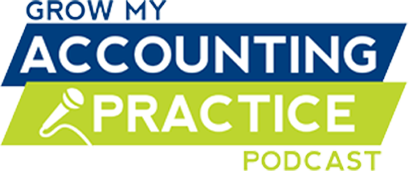I know you have heard it a million and one times; most people fear public speaking more than they fear death. I think “being buried alive” comes in as a distant third (but for some people, you never know).
So, how about those courageous folks who actually get up on stage? Some of them totally rock the show. Then there are those who can be so boring they actually have the audience wanting to die.
If you want to be one of those speakers who people rave about, scramble to get autographs from, and occasionally throw their underwear at while on stage (hey, it could happen), then it is time to learn from the masters. . . comedians.
Comedians are the ultimate public speakers. They have to hold an audience’s attention for an hour or more. They don’t get a break during their talks, and they don’t get to lean on the audience for Q&A. They are expected to make the audience laugh constantly. And get this…they don’t even use a powerpoint bullet list of discussion points.
Comedians know that the secret to keeping an audience engaged in their routines, is following the commandments of powerful public speaking. Here are their secrets.
1. Humbling Personal Stories – As a general rule, an audience will envy someone “above” them, connect with someone “like” them, and support someone “below” them. Any degree of arrogance or “I am better then thou” will result in a disengaged audience. Comedians often open up their acts by sharing a humbling or even humiliating story. Not only is it funny, but it shows the audience that they are just a regular Joe. And regular Joes get support from the audience.
2. Just Say No to Powerpoint – How often do you see a comedian using the Powerpoint crutch? Like pretty much never. Unless, of course, they are making fun of PowerPoint. Comedians know that the best pictures are the ones that you draw in people’s minds. They also know that they want the audience looking at them, not trying to read off of a screen while they do their routine. Comedians use detailed descriptions, storytelling, body movement, voice tonality & changes, and props (that microphone stand can serve a million purposes).
3. Gesticulation – They say that the spoken word is only 5% of communication (Personally, I don’t know who “they” are, but I think they are right.). The remainder of communication is in our tone, pitch, facial gestures, and body movements. Comedians know that on stage, it is hard for people to see the minor expressions (e.g. small facial gestures), so they make big movements. Every body and facial movement is over emphasized so even the person with the worst seats in the house can see it clearly.
4. Laugh-Cry-Laugh – Like waves rolling in from the ocean, comedians know that the most engaged audiences need to have a release (laughter) and a recovery (a moment of calmness) before the next release (laughing again). As a public speaker, you may even want to move your audience through a little more of an emotional roller coaster. The laughing and crying keeps them connected at an emotional level, and opens them up for you to deliver your knowledge and lessons.
5. No Lectern – How often do you see comedians using a lectern? That’s right. . . never! A lectern serves no other purpose than to hide a speaker’s fidgety hands from the audience’s sight. The lectern is nothing but a big fat crutch. Avoid it like the plague, unless you use it as a prop.
6. No Notes – When was the last time you saw a comedian pull out a notecard to see what their next joke was? I’m gonna go with never. A great speech is a prepared speech. Just like comedians practice their routines over and over, you need to do the same. You can use different mnemonic memory techniques to remember even the most complex speeches. Remember, if you take your eyes off of your audience, they will take their eyes off you – and that creates a disastrous speaking situation.
7. The Loop Back – Ever notice that most comedians wrap up their routines by referencing some jokes from earlier on in their routine. I call this method “The Loop Back.” Often these jokes come across as the funniest. Why? Because they are funny (duh!), they reference something familiar (another joke from earlier in the routine), and are an experience that the entire audience has had together(we feed off each other). In the closing of your speech, make sure your refer back to the core content they just learned. You don’t need to end on a joke, but you do need to end on a shared, familiar experience.
Comedians are master public speakers. That doesn’t mean you need to be a comedian to be a master public speaker. You aren’t even required to tell jokes (but a few thrown in here and there will surely help). Start to observe the techniques comedians use, and employ them in your own presentations. One of my favorite (and free!) sources are the comedy routines found on TV. I just set my TiVo to record them, and enjoy the “training” later. You certainly can’t beat that kind of training! You’ll be rolling in laughter the entire time.










